Picture yourself on a heap of sand in the middle of the ocean. Picture a palm-tree. If you’re more of the baroque kind, also picture some coconuts. This basic cartoon setup has now lasted for more than 50 years and judging from more than 240 entries on toonpool.com, the desert island cartoon is not dead yet.
If there is something like an ultimate gag cartoon scenario, I think it’s this one. Forget about “therapy sessions”, “Death knocking at people’s doors” or the island cartoon’s boring cousin “two guys crawling through the desert”. Nothing beats the absurd microcosm of the desert island. Sure, there is some camp value to it, but there is more. Take the proud history of the cliché: 12th century Arabic authors have written novels about guys stranded on desert islands. Or so I have heard.
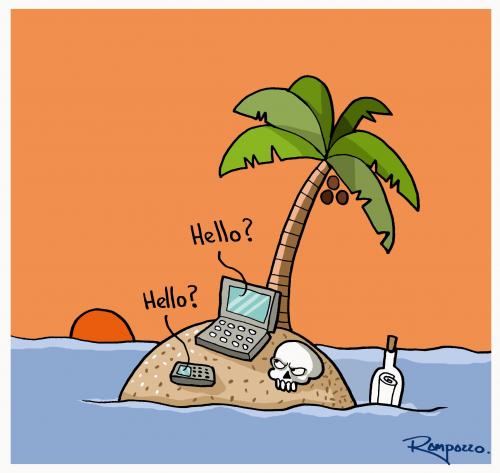 Later castaways, most notably Crusoe and his Swiss family added commentary on Western culture and technology to all the philosophizing about human nature. To some extent, desert island cartoons simply continue in this tradition – take this one on civilizational diseases, this one on media ethics or the immortal cartoon wisdom that at all times men want to have sex with attractive women and only with attractive women (male perspectives are as dominant in desert island cartoons as in other classic settings). The whole social commentary aside, a considerable portion of the island jokes seems to appeal to the reader’s schadenfreude. Is there some universal and primordial contempt for guys on islands? Do they function as stand-ins for our worst fears of isolation or are we secretly jealous about their micro paradises? In the latter case they probably deserve all the things cartoonists do to them.
Later castaways, most notably Crusoe and his Swiss family added commentary on Western culture and technology to all the philosophizing about human nature. To some extent, desert island cartoons simply continue in this tradition – take this one on civilizational diseases, this one on media ethics or the immortal cartoon wisdom that at all times men want to have sex with attractive women and only with attractive women (male perspectives are as dominant in desert island cartoons as in other classic settings). The whole social commentary aside, a considerable portion of the island jokes seems to appeal to the reader’s schadenfreude. Is there some universal and primordial contempt for guys on islands? Do they function as stand-ins for our worst fears of isolation or are we secretly jealous about their micro paradises? In the latter case they probably deserve all the things cartoonists do to them.
Yet, without the evolution of stereotypical desert island imagery in the course of the development of the gag cartoon, today’s desert island cartoons wouldn’t be the same.They have moved away from their narrative counterpart the desert island joke. The visual codes not only allow for quicker storytelling, they can also be manipulated to achieve new comic effects and new ways of social commentary.
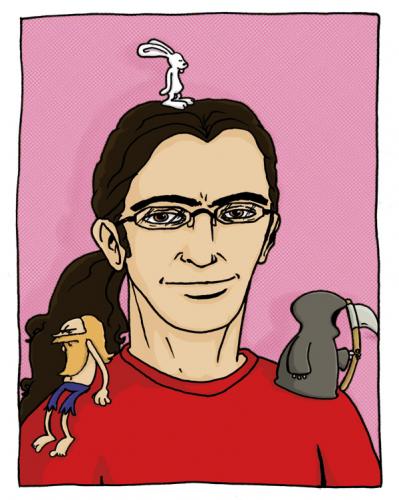 German cartoonist Mil has uploaded a number desert island cartoons to toonpool.com. Some of them are pretty classic in their joke structure, but there are others that demonstrate Mil’s own, brightly colored, vision of the island cliché. One of my favorites unexpectedly changes the Post-Gary-Larson atmosphere of modern island cartoons into something that can best be described as loonytunesque – Reason enough for me to ask him about an artist’s perspective on the genre. (see below for the cartoon)
German cartoonist Mil has uploaded a number desert island cartoons to toonpool.com. Some of them are pretty classic in their joke structure, but there are others that demonstrate Mil’s own, brightly colored, vision of the island cliché. One of my favorites unexpectedly changes the Post-Gary-Larson atmosphere of modern island cartoons into something that can best be described as loonytunesque – Reason enough for me to ask him about an artist’s perspective on the genre. (see below for the cartoon)
Desert islands are a recurring motif in your cartoons. Is there something you especially like about that particular genre?
I like the limitations that come with it. Of course the fixed format of cartoons always means a limitation. The orientation can be either portrait or landscape. The number of panels you can use is also always the same – either you have single panel, a three-panel-strip, a four-panel-strip. If you further limit yourself by using a cliché genre such as “desert islands”, the limitations can be liberating in a way. These islands are settings readers can identify immediately. It doesn’t matter how that guy ended up on the island. It doesn’t matter what happened before and it doesn’t matter what will happen after the situation depicted. As an artist, you can leave all of this out and focus on the actual joke.
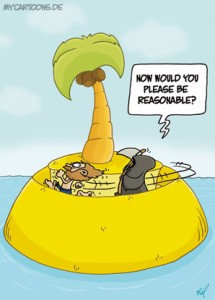 Are there other aspects of these cartoons that you don’t like?
Are there other aspects of these cartoons that you don’t like?
There are obviously also some disadvantages about the limitations. Sometimes things don’t fit inside the panel. For example, I have been thinking abut a new cartoon that requires about 20 people on the island and I just couldn’t make it work.
Things like these will happen from time to time: the limitations of the format will point out your own artistic limitations to you. In these cases you will have to compromise between the setting, the format, and your ideas. Or you have to wait until you come up with a solution how the cartoon could work anyway.
What do you think the future of desert island cartoons will look like?
Some people think that island cartoons have become superfluous. You can find this argument in How to Make Webcomics by Scott Kurtz, for instance. Desert island cartoons, the argument goes, originated in a time when the majority of cartoons was published in newspapers. These cartoons catered to a broad spectrum of readers. On the Internet you can publish cartoons that are set, for example, in a library or in the emo subculture – cartoons aiming at a very specific readership. Desert islands and the like are considered “too classic”, i.e. dated.
Personally, I don’t agree with this. You can always include “modern” topics in an island cartoon. Moreover, doing cartoons is about good ideas and not about proving you’re “modern” by choosing some exotic target audience. There is nothing wrong about ideas that are suited for a broad spectrum of readers. Sometimes you have a great idea that fits the desert island format. Why should you avoid doing an island cartoon?
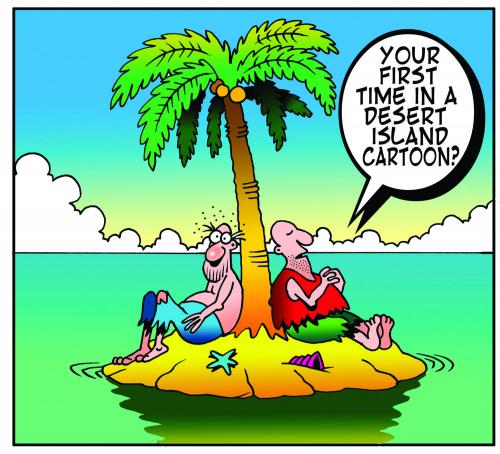 Are meta-desert island cartoons, i. e. desert island cartoons about desert island cartoons, a way to make the genre more “modern”?
Are meta-desert island cartoons, i. e. desert island cartoons about desert island cartoons, a way to make the genre more “modern”?
Well, meta-cartoons are always a bit tricky. They are mainly directed at insiders, at other cartoonists. Most people don’t get them. I think these cartoons are funny, but it’s nothing you could do very often. A whole series of meta cartoons wouldn’t be funny anymore.
To broaden the scale: What kind of role do cartoon clichés, cartoon genres in general play for your work as an artist.
First of all, these categories can facilitate your work. If you deal with cartoons and comic strips a lot, these clichés are very familiar. After all, they have been repeated for 50 years, probably for a hundred years. So, if you’re thinking “I could do another UFO cartoon,” the right ideas will turn up automatically, because you have internalized the genre in a way.
That means you sit down and systematically try to think of a new UFO cartoon?
Sometimes I do. Most ideas come spontaneously but sometimes I sit down and think about particular topics. Sometimes I just draw an alien and an idea will show up.
Apart from the advantages I will draw from such established genres, a lot of readers like them as well. I often receive emails from people who especially enjoy my desert island cartoons. Frequently they will point out how they like the continuity, the recurring island and the recurring guy on the island: That’s how they perceive the cartoons. I actually don’t intend this to be the same guy and the same island in every cartoon. A few days ago, a reader described to me what he enjoyed about the island cartoons. You know these cartoons, he wrote, you know the whole premise. Still, you have to laugh because there always is this little extra twist. That’s what makes the whole business attractive for an artist: always coming up with a new twist, a joke, a surprise when people think that they have seen it all.
Thanks for your time!
Paul Hellmich
title image: “Ilha des…” by Wilmarx
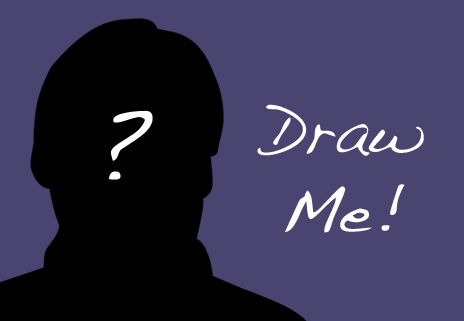
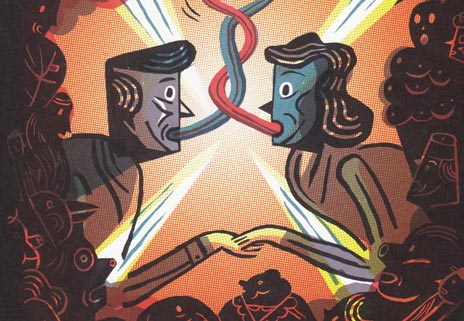
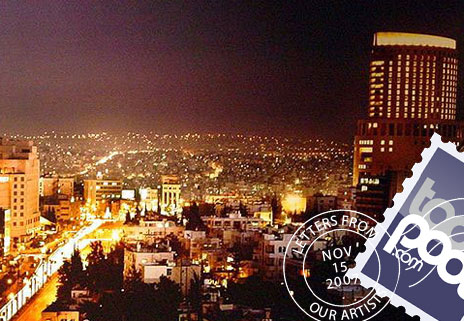

+1: http://wilmarx.blogspot.com/2009/10/planetalixo.html